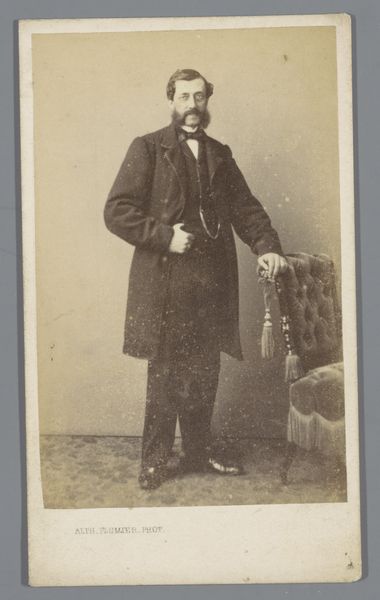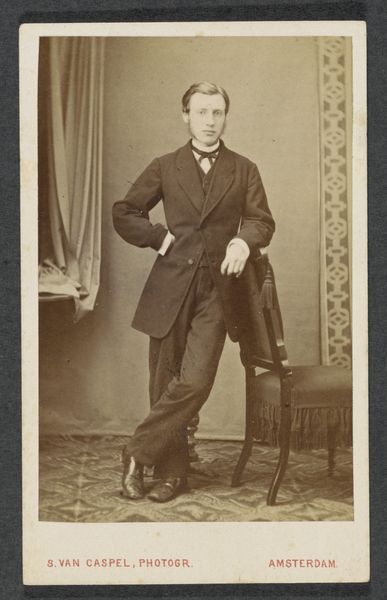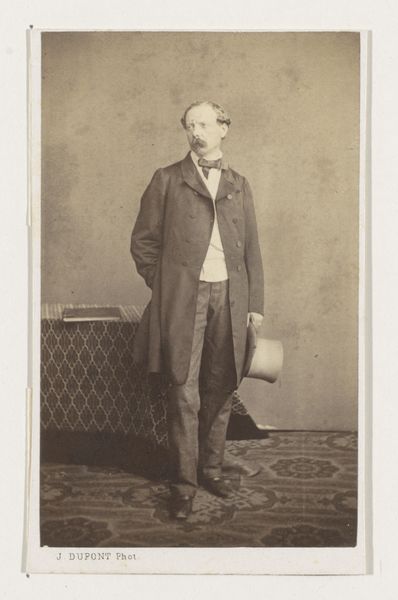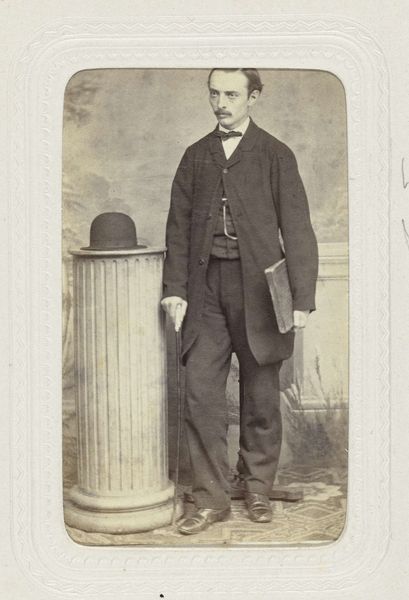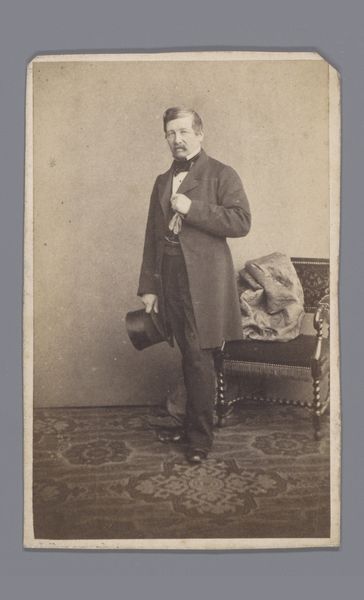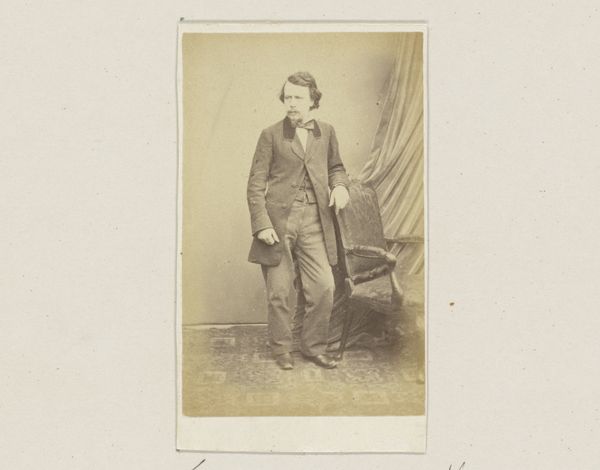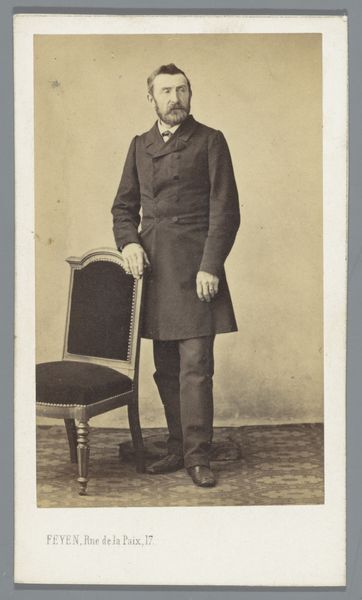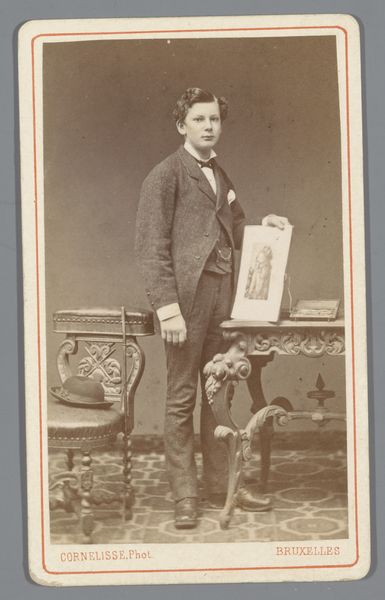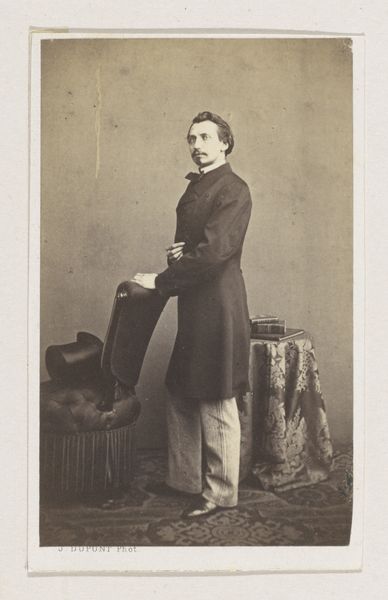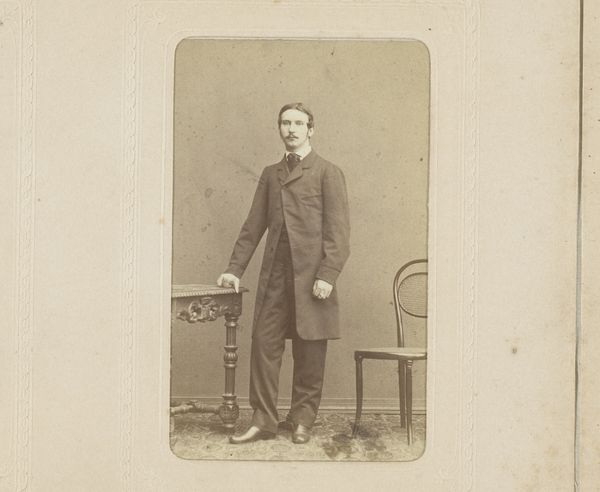
Dimensions: height 100 mm, width 62 mm
Copyright: Rijks Museum: Open Domain
Curator: Here we have Joseph Dupont's full-length portrait of the sculptor Léonard de Cuyper, taken around 1861. It's an albumen print, offering us a fascinating glimpse into the artistic circles of the mid-19th century. Editor: My first impression is the air of subdued dignity about him. There’s something both formal and incredibly human in his stance. The slightly askew cravat hints at a real person beneath the polished surface. Curator: Dupont, primarily a portraitist, operated within a specific social framework where the image conveyed status and character. This portrait would have served as a visual declaration of Cuyper's artistic standing in Belgian society. The very act of commissioning a photograph like this underscored an individual’s perceived importance. Editor: I agree. And you see how he leans ever so casually on that ornate chair? It’s a subtle, but I think effective, symbol of his craft, or maybe more broadly, a visual metaphor for support, be it artistic, economic, or otherwise. The chair also hints at a certain domesticity that contrasts nicely with his rather serious gaze. Curator: I also find it interesting that it is a full-body shot. Dupont made a choice here; the style suggests a particular awareness of Realist aesthetics taking root across Europe at this time. By including Cuyper’s entire figure, along with the trappings of his presumed profession—implied through that very stylish chair—Dupont presents a very thorough portrait. Editor: Considering photography's relatively young age as a medium, the portrait’s level of detail and tonal range feels strikingly modern. It's easy to imagine how impactful an image like this would have been, offering near-perfect likeness and permanence, especially in comparison to paintings of the time. It gives a sense of accessible presence. Curator: It absolutely did, as photographic portraiture rapidly democratized image-making! Previously the purview of the upper class, it became an option for the bourgeoisie, enabling wider visual representation of society. Dupont played a crucial role in that popularization. Editor: Reflecting on this image, I see a testament to both individual accomplishment and the social dynamics of its time. It is interesting to realize that this picture provides not only an aesthetic insight, but also allows us to examine the values that shaped Belgian society in the 19th Century. Curator: Precisely. The photograph really encapsulates how deeply intertwined artistic identity, social status, and technological advancement had become.
Comments
No comments
Be the first to comment and join the conversation on the ultimate creative platform.

